Stray Review – Fun cat adventure that doesn’t always land on its feet
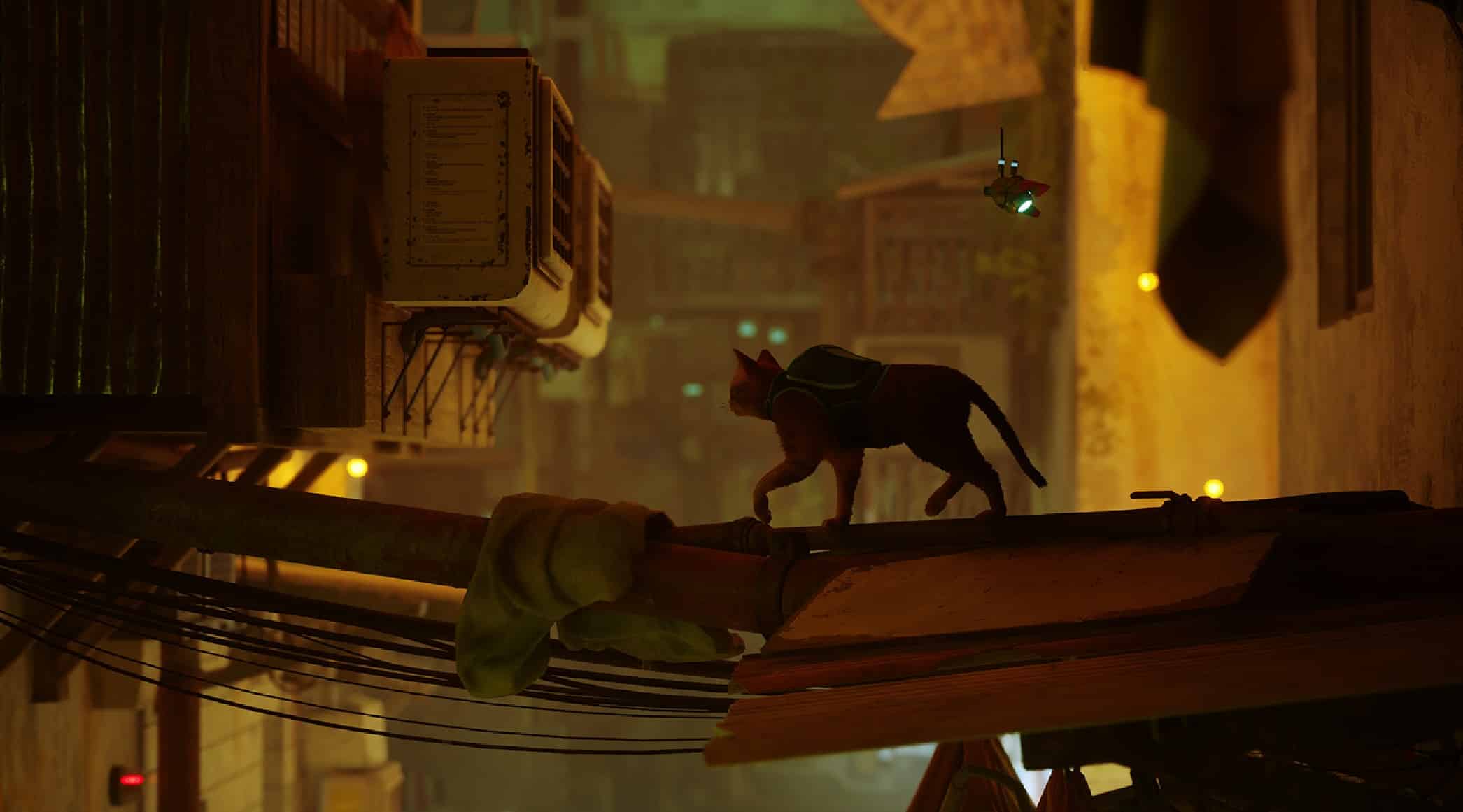 Bluetwelve Studio / Annapurna Interactive
Bluetwelve Studio / Annapurna InteractiveAt a glance, Stray’s gorgeous visuals and meticulous level design are sure to capture anyone’s attention, especially those with a fondness for cats. But with rather simple moment-to-moment gameplay that fails to evolve a great deal beyond the opening stage, the charm of playing as an agile feline wears thin long before credits roll.
There’s no denying Stray is one of the more unique games we’ve seen in recent years. Purely through its trailers alone, the title has gone viral time and again, and rightfully so. From a visual standpoint, the indie project is nothing short of remarkable.
Whether it’s the broad range of exquisitely detailed environments or the stunning lighting system that brings every rain-soaked alleyway to life, Stray is unquestionably one of the best-looking games on the market today. And obviously, the fact you play through the entire game as a cat has certainly helped drive interest as well.
Though beyond its striking visuals and unique choice of protagonist, it quickly becomes clear that the surface-level charm isn’t enough to keep the experience engaging for very long.
Stray is charming at first and fun through its opening stage but fails to evolve and capitalize on its originality from there. Given its near-premium price tag to boot, it’s ultimately a tough sell unless you’re truly itching for a competent platformer.
Stray: Key Details
- Developer: BlueTwelve Studio
- Price: $44.99 USD / £34.99 GBP / $59 AUD
- Release Date: July 19, 2022
- Platforms: PlayStation 4, PlayStation 5, PC
Stray trailer
Clawing at greatness
Without any overbearing exposition or lengthy preamble, Stray throws you right into the middle of its mystery as you awake in a dreary landscape. It’s just you, a cat, and a few of your feline friends left to connect the dots and piece together what happened to this empty and decrepit world before you.
Right from the jump, it’s abundantly clear you’re in for one good-looking adventure. Every inch of Stray is beyond stunning. No texture is carelessly placed, every part of every space has been designed with such painstaking detail that you can’t help but be in awe whenever you reach a new area. It helps then, that your character takes up very little of the screen and no HUD exists to block even the slightest bit of your view.
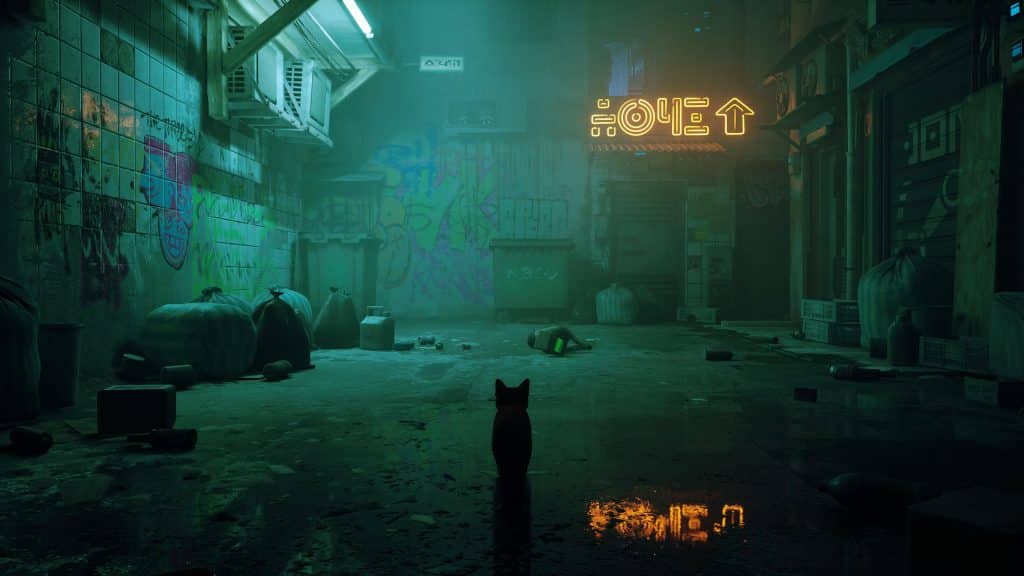 Bluetwelve Studio / Annapurna Interactive
Bluetwelve Studio / Annapurna InteractiveFrom the wildly overgrown fauna sweeping across giant concrete structures, left unattended for how knows long, to the chilling backstreets with flickering lights and quirky characters aplenty, each new environment is just oozing with detail and personality. Stray does an incredible job of diversifying the aesthetic and layout of these areas in each chapter while keeping commonalities throughout to punctuate key narrative beats.
It all feels like part of one masterfully designed world and playing as such a small creature, you’re left no choice but to soak it all up as you navigate through its many treacherous paths.
It wouldn’t be far off to compare many of the locales in Stray with those seen in The Last of Us Part 2, a game still often held as the industry’s high watermark, especially in the post-apocalyptic regard. As the debut project for such a small team, it’s truly a stunning accomplishment worthy of praise.
It’s one of those titles where simply looking at screenshots online or watching compressed gameplay won’t do it justice.
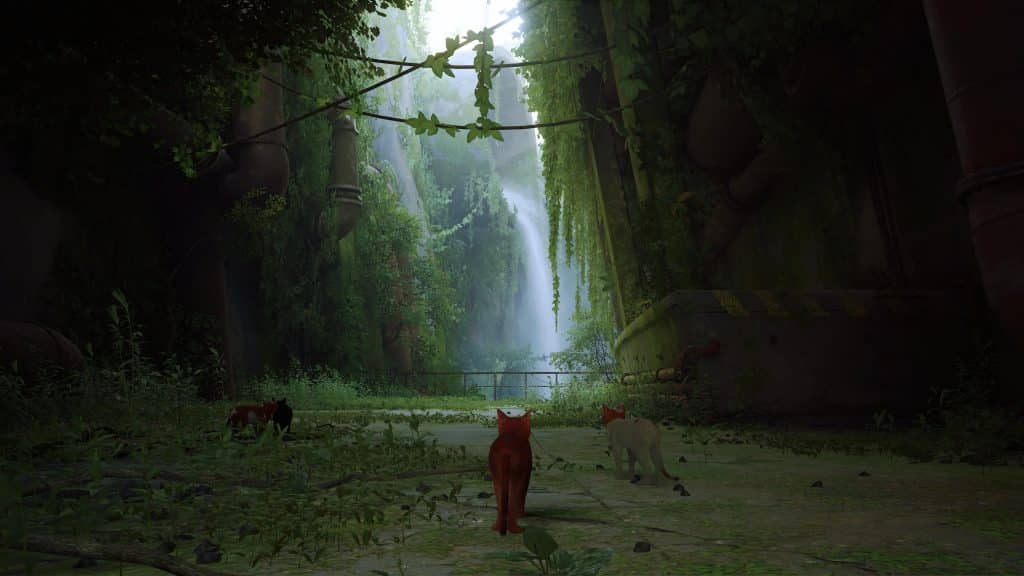 Bluetwelve Studio / Annapurna Interactive
Bluetwelve Studio / Annapurna InteractiveComplemented by a fantastic soundtrack that knows when to interject and when to make way for valuable bouts of silence, overall presentation is nothing short of phenomenal. Especially in the latter stages of the game as you reach some of the more expansive areas, Stray is a sight to behold when firing on all cylinders.
With dozens of moving pieces on display, enormous playgrounds to run amok in, and an electric score in the background, it all comes together for a brief, yet richly detailed experience. Though while Stray is always a treat to look at, listen to, and occasionally interact with, the rest of the package doesn’t quite live up to the high bar of its presentation.
Limited by its concept
Beyond its standout appearance, Stray does little to impress when it comes to actually playing through each of its 12 bite-sized chapters. As you might have guessed from its premise, controlling a cat leaves you with certain limitations that plenty of similar platformers can easily avoid.
Walking, jumping, scratching, and meowing is about all you’re able to do in Stray. While this strict range of systems may seem fine on paper, it’s the way you engage with each feature that leaves a lot to be desired.
Traversal is the main focus here as you’ll constantly be on the move, jumping from one rooftop to another hunting for collectibles, or rapidly climbing up makeshift scaffolding to evade a nearby threat. And while it’s no easy task to keep something as simple as jumping all that engaging for long, Stray never really does more than the bare minimum.
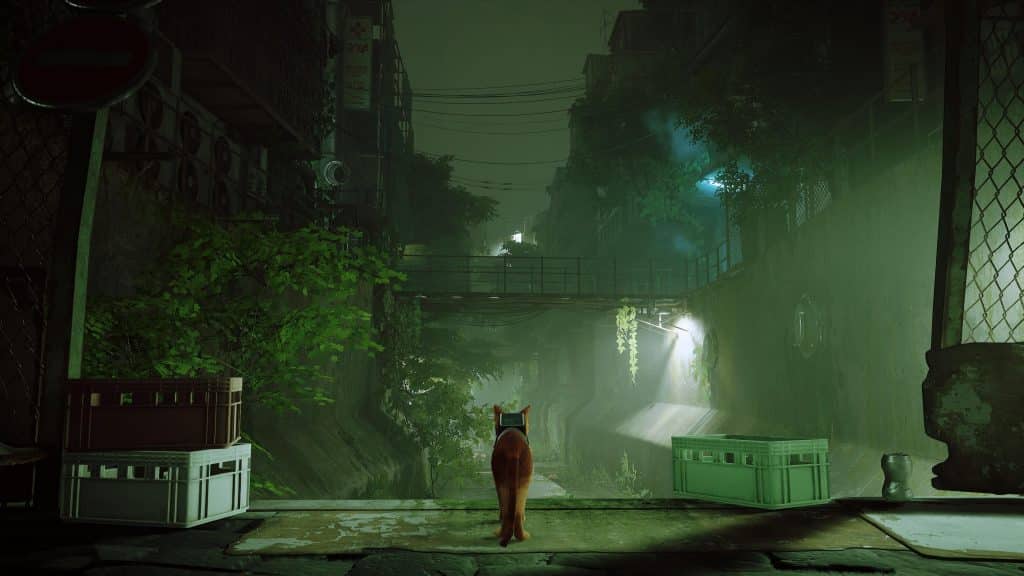 Bluetwelve Studio / Annapurna Interactive
Bluetwelve Studio / Annapurna InteractiveApproaching any given surface displays a button prompt, quickly tapping the jump command will get you there, and that’s all there is to it. No risk and reward, no challenge in timing your movements, nothing in the way of an energy system to keep you on your toes, it’s all quite mindless. Although it is simple enough for anyone to pick up and play, regardless of gaming experience, such vacuous navigation is enough to pull you out of the flow.
This same argument can be applied to just about all gameplay systems throughout. Especially with many repeating sequences as the game alternates between exploration, stealth, and chase sections, it all grows quite repetitive after just a few short hours due to the lack of innovation. If these sections introduced new mechanics or obstacles to keep you guessing, it’d be a different story.
It’s not that a game of this nature – one clearly adopting a more laid-back approach without fierce enemies, difficult puzzles, or the like – needs to be challenging per se. Gone Home, What Remains of Edith Finch, Oxenfree, other laid-back games of that variety are among some of the most captivating across the industry in recent years. More that its own potential is severely limited by these simplistic hindrances.
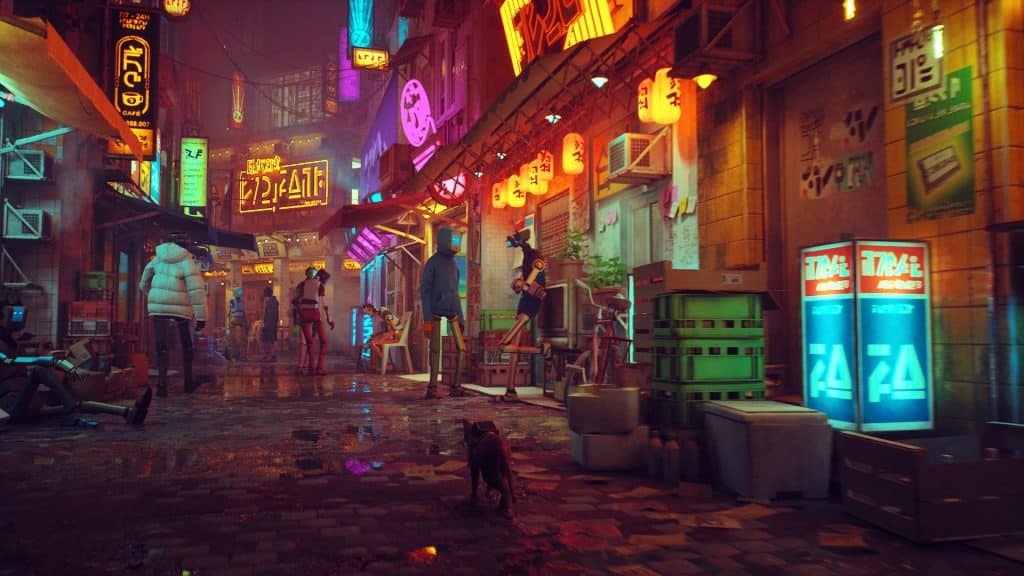 Bluetwelve Studio / Annapurna Interactive
Bluetwelve Studio / Annapurna InteractiveIt may sound controversial but when you really think about it, there’s no reason for you to be playing as a cat. Obviously, it’s a unique approach and strictly from a marketing perspective, it’s worked wonders in the lead-up to release. But when it comes to actually sitting down with the game, that success doesn’t exactly translate.
If you were instead controlling the robot companion that accompanies you, as an example, options would be more vast. You could see unique traversal systems coming into play, allowing you to mix things up and master various mechanics throughout the journey. We could have more intuitive chase sequences and stealth scenarios with new gadgets at our disposal in every few chapters. All in all, it could serve to keep things fresh for a lot longer than the cat’s evidently limited range of features.
Stray does try to feed you a small selection of new mechanics along the way though none are particularly inspired nor do they make a real impact on how you play. Without spoiling anything, arguably the biggest addition to your arsenal comes towards the very end of the game and rarely comes into focus after its introductory sequence. Instead, the game seems to prioritize moments of cuteness. There’s always a bed to sleep in and a rug to scratch in every chapter, but rarely do you come across an intuitive and exciting feature.
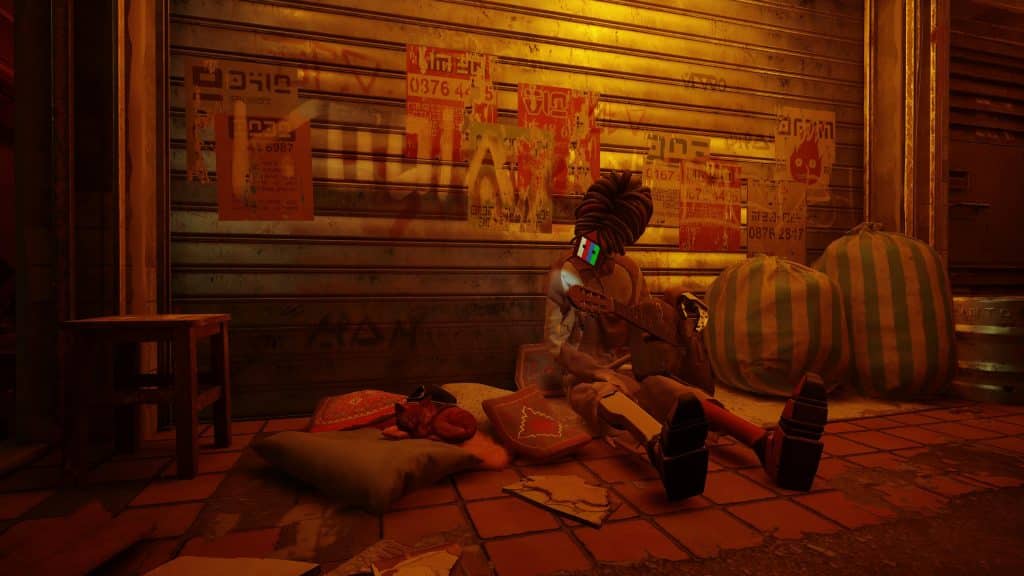 Bluetwelve Studio / Annapurna Interactive
Bluetwelve Studio / Annapurna InteractiveIn terms of substance, Stray offers 12 full chapters to play through, each with its own set of collectibles to track down. These collectibles serve as ‘Memories’ to help piece together the backstory of this world and its remaining inhabitants.
All in all, my time with the game came to an end after five hours, during which, I happened upon all Memories without making much of a conscious effort to do so. If you’re looking for a challenging collectathon, it’s worth tapering expectations there.
Given this limited replayability and a near-premium price tag to consider, Stray isn’t the easiest recommendation. While its gorgeous visuals and charming cat protagonist are enough to draw anyone in, it’s the lack of meat on the bone that might spoil the experience before long.
7/10
If you go in purely to see the world in motion and walk through its immense cityscapes, you’ll be delighted by what’s on offer. But if you go in expecting a substantial gaming experience with plenty of input and deep engagement, you may end up disappointed.
Falling somewhere in the middle, I can appreciate Stray’s overachieving presentation but wonder what could have been with this setting and this attention to detail had it not centered around a cat with limited room for gameplay systems.
Reviewed on PlayStation 5.